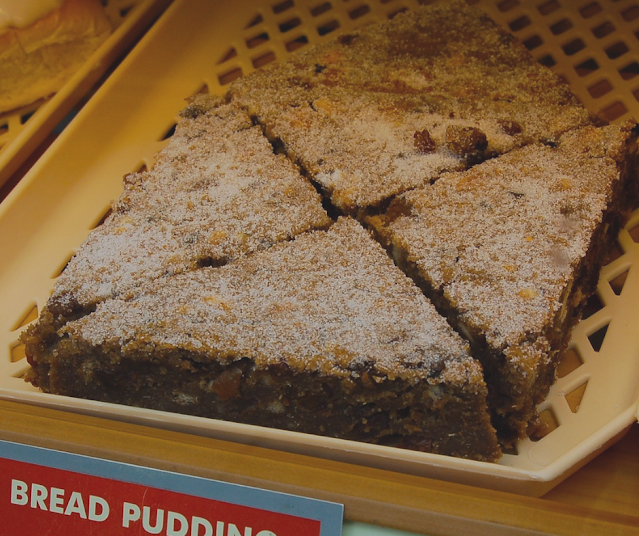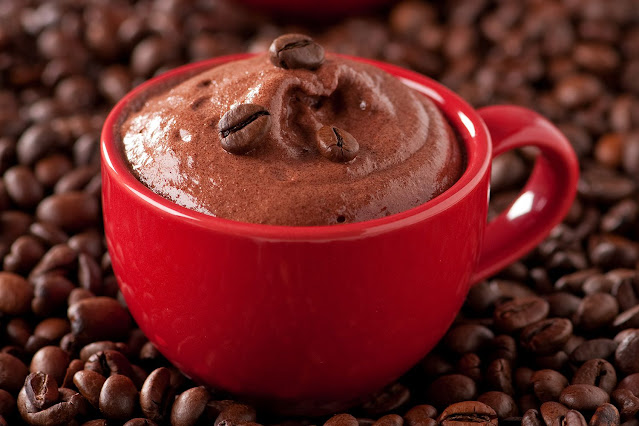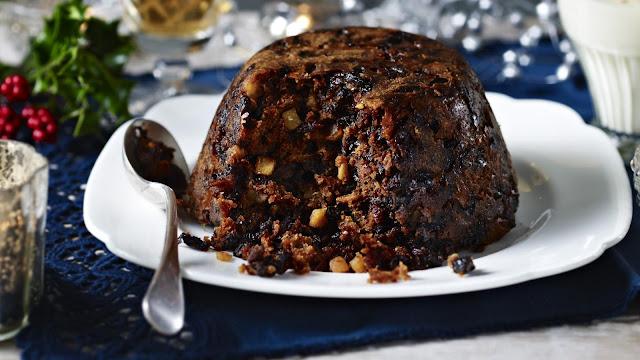By: Johannie Ryzz Conlu
Pudding, depending on who you ask, can mean different things. If you're in the United States and Canada, the delicacy is a sweet, milk-based dessert similar to custards and mousse. However, in the
United Kingdom, pudding can be boiled or a steamed savory dish.
The beautiful story narrates that modern puddings have been born from different grandparent recipes such as pudding in a pot or of calves of chaldron. They also had the sausage version, spicy rice cakes, commoner porridge, gingerbread, sugared almonds, to preserve fruit and jelly. Although it has a strong line of non-dessert courses, the delectable flavor brought by sweet and creamy varieties has won some of today's mouth-watering puddings.
Pudding's Unique Journey
"Different cultures from all over the world have their own version of pudding, so pinpointing a place of origin is almost impossible.
The earliest puddings were said to be related to boiled sausages originating in the United Kingdom and Ireland. It was prepared in the blood of beef with pork fat or beef suet, and oat groats. As a matter of fact, pudding is a word derived from the Latin word botellus which means sausage.
There is so much fun figuring out how exactly the sausage pudding expanded its taste from extremely savory to spicy, rice-y, jelly, and today's cakey delicacies.
What is confusing is the pudding now arises from a range of cultural flavors each with its own cooking preparation and substances. So if you're visiting abroad and you're served with a chocolate self-saucing pudding, don't be surprised. Now is your turn to savor every country's flavorsome pudding.
Let's go through the characteristics and history of the most popular versions:
Betty
Click image for the recipe
The first to become
popular in the 1860s, Betties are a traditional American dessert made from fruit and sweetened crumbs that is usually served with lemon sauce or whipped cream. Typical recipes used sliced apples that are sprinkled with spicy-sweet breadcrumbs and butter. When baked, the toppings come out deliciously toasted.
Blancmange
Click the image for recipe
This is a dessert that's usually served cold. It is made of milk or cream and sugar that has been thickened with flour and served with almonds. Although the origins are unclear, it was an upper-class dish called "white dish" popular in most of Europe during the Middle Ages to the early modern period.
The white dish has unfolded into a meatless pudding with cream, eggs, and gelatin in the 17th century. Arrowroot and cornflour were added in the 19th century to evolve into the blancmange we know today.
Boiled Pudding
Commonly referred to as the original pudding, it comes in different flavors. Boiled pudding is constantly on a stovetop until it has thickened. Made with wheat flour, raw hard fat of beef (suet), breadcrumbs, raisins (or any dried fruit), and spices.
Also known as suet pudding, most of its versions have a strong British taste, which is either boiled or steamed and can be sweet as a dessert or as a savory course. Today, butter is mostly substituted with the legendary suet.
Diplomat Pudding
Originating from France, diplomats alternated between layers of rum-soaked ladyfingers and candied fruit, egg custard or bavarian cream, and jam. Diplomat puddings are prepared in a mold. It's then refrigerated, coated with fruit sauce, and served cold.
The great cook Marie-Antoine Careme was inspired by the United Kingdom's sweet pudding and prepared this rich decadent cake for the Vienna Congress in 1815. So creating his own version of a crumbled brioche topped with cream, candied fruit, and kirsch (soured cherries like wine), which he called "a la diplomate."
Hasty Pudding
Click image for recipe
Hasty pudding back in the 27th century was made with flour, cream, raisins, currants, and butter. As a favorite tradition in post-colonial England, it was brought to America by English colonists. From the traditional boiled milk, wheat flour, and a dash of salt, the modern version created pudding or porridge of flour or oatmeal boiled in water.
Due to the dish's popularity, it appeared in different recipes using a wide range of ingredients and manner of cooking. Hasty pudding later became known as Indian pudding. The dish continued to be popular and have encouraged creative cooks to make their own changes to the recipe.
Mousse Pudding
Considered the modern-day pudding, mousses are usually made with whipped cream or egg whites, sometimes both, and flavored with chocolate, caramel, coffee, or various herbs and spices, such as vanilla or mint. It is usually served as a cold dessert or as a cake filling.
Originally, mousse pudding was a French dessert made of whipped in pyramidal shapes. Since French chefs have been preparing chocolate delicacies since the 17th century, they developed chocolate dishes with foamy textures. With a blend of chocolate, coffee, liquor, and fruits poured on top of the pudding, they called it Creme en Mousse or "cream in foam."
Panna Cotta
It was in 1879 when Panna Cotta was known as a dish made of English milk, gelatin, and then molded. Although described as a traditional Italian dish, it didn't appear in any Italian cookbooks until the 1960s. It is made of sweetened cream with gelatin as a thickener.
The Panna Cotta was said to have been invented by a Hungarian woman as a creamy dessert that has been cooked in cream using sugar and cream ingredients. Other sources say it was made with egg yolks prepared like custard. Today, it emerges with a silky texture and milky taste that may also be aromatized with vanilla or other flavorings.
Steamed Pudding
Click image for recipe
Steamed puddings have a wonderful story being a part of England's celebrations. Its first records began in the early 15th century as a savory pottage cooked from meat and root vegetables and served at the start of a meal.
Over the years, Christmas pudding has intensified its character using England's lavishness of dried fruits. The salty-tasting cake was modified into a sweet cake dish lavished with eggs, butter, spices, and liquor - all steamed into a soft-cake-like entree. At times made with dried currants, suet, raisins, almonds, and spices, it has been a dessert usually served warm and accompanied by a hard sauce on Christmas.
Rice Pudding
Click image for recipe
According to Buddhist scriptures, rice pudding was Gautama Buddha's final meal before his enlightenment. It was also frequently mentioned in Victorian and Edwardian literature as cheap food often served to children.
Rice pudding was believed to have its beginning in China, being rich for its rice culture. The dish was made from a mix of rice and water or milk. Other recipes include cinnamon, vanilla, or raisins. When served as a dessert, it is often sweetened, usually with sugar. Some historians say this pudding type originated in India for its primitive rice and sugar culture.
Yorkshire Pudding
In 1737, Sir Alexander William George Cassey published a recipe for "dripping pudding" in his book The Whole Duty of Woman. This is a way of using fat from the dripping pan popularized by cooks in Northern England.
In the book The Art of Cookery Made Plain & Easy, by Hannah Glasse published in 1747, a similar recipe was published with the name "Yorkshire Pudding." Yorkshire pudding is a dish that can be served in multiple ways depending on the size and ingredients. It is mainly flour, eggs, water, and milk. It can be served with onion gravy as a side dish. It can also be served with beef and gravy, or sausages and mash as the main course.
Summer Pudding
Despite first appearing in print in 1904, identical recipes with different names have been found from as far back as 1868. Summer pudding is mostly popular in the 19th to early 20th century.
A popular English dessert, summer pudding is a cake treat made from different summer fruits. The most popular recipe is the purple-looking cake made especially with berries and purposely stain the white bread that has been soaked in the fruit and fruit juices. It is then left overnight and turned onto a plate. Today, many home cooks find using bread that's somewhat stale easier.













Comments
Post a Comment